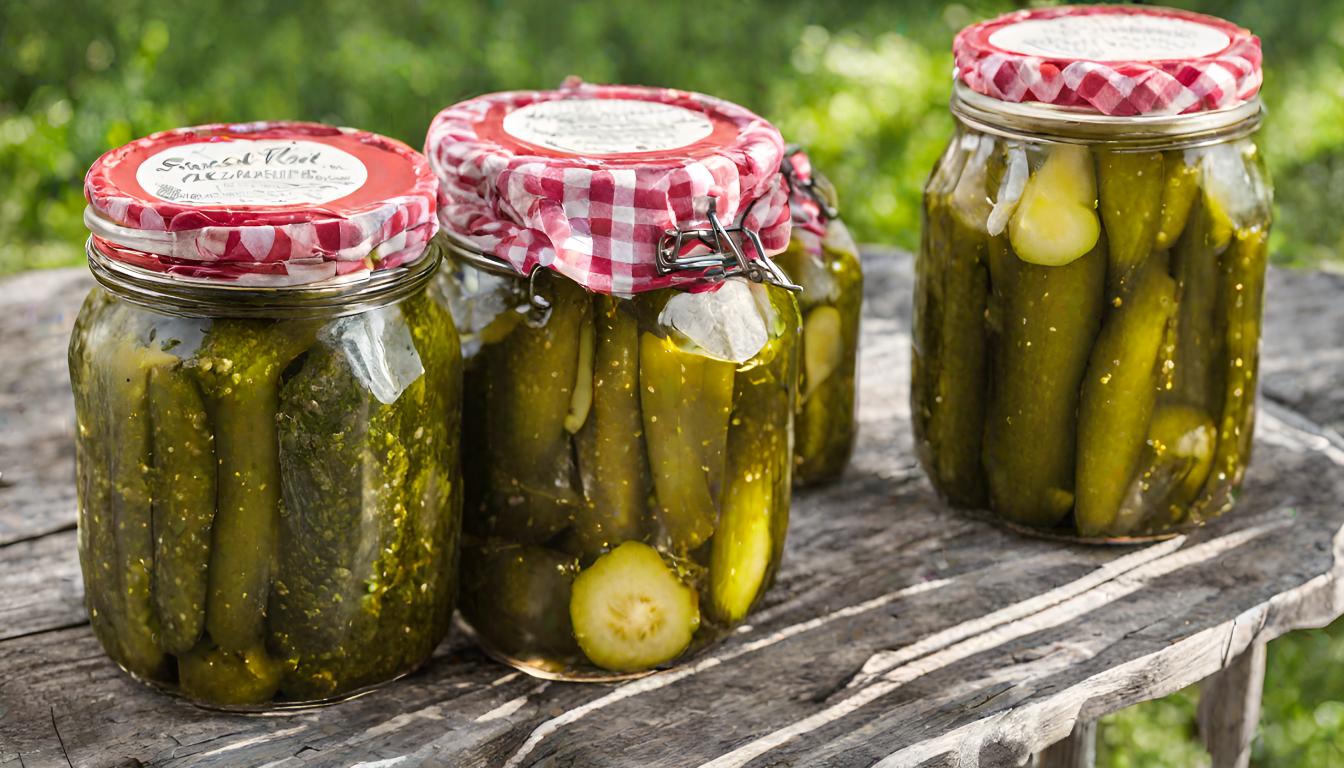In the culinary world, sweet pickles are celebrated for their unique blend of tangy and sweet flavors. This exploration delves into their allure, examining the agents that sweeten them, the art of pickling, and the enjoyment of these crisp treats. From selecting the right cucumbers to sealing the final product, we uncover the process behind making sweet pickles. Additionally, we discuss their health benefits and address frequently asked questions about this delightful food. Join us as we embark on a flavorful exploration of sweet pickles.
To optimize keyphrase density, ensure the term “sweet pickles” is naturally integrated throughout the text without exceeding the recommended frequency. Aim for a balanced inclusion that enhances readability and engagement.
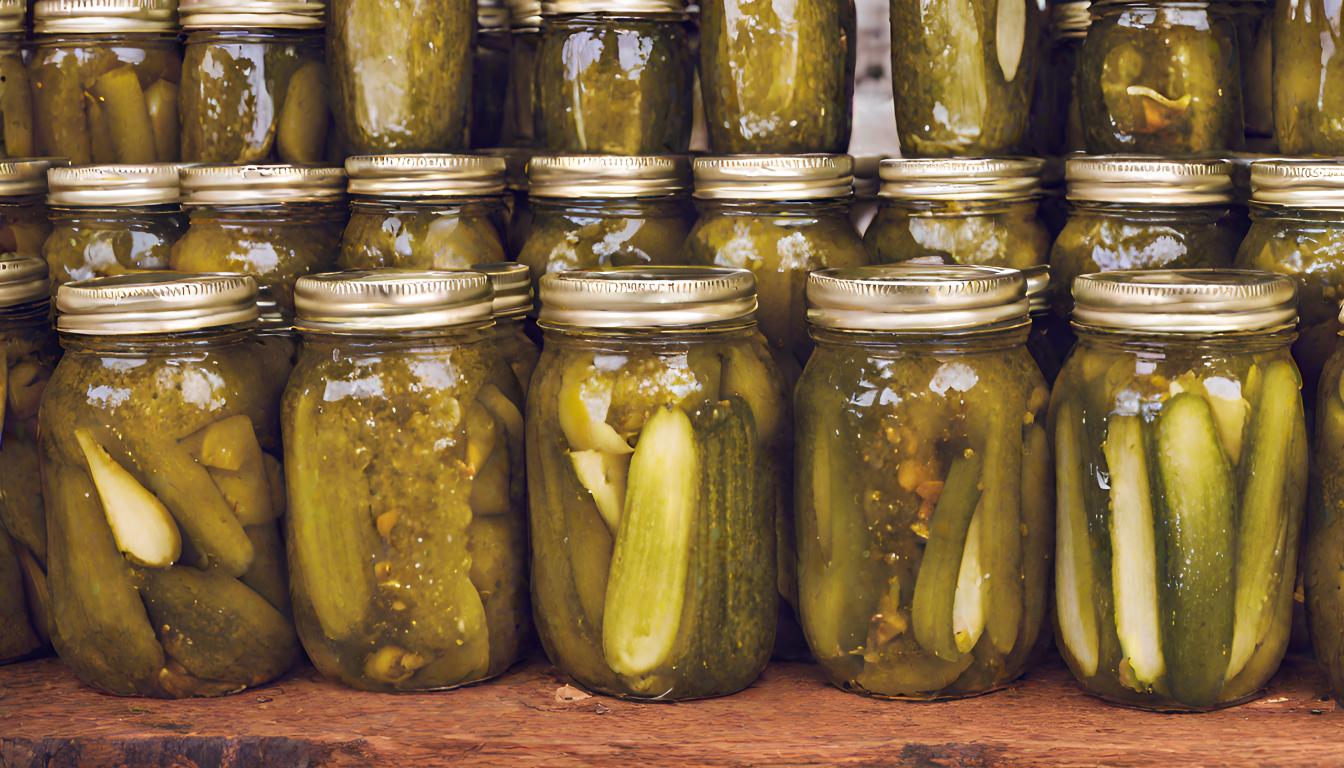
In the world of culinary delights, sweet pickles shine with their tangy and sweet flavors. They’re a global kitchen favorite. This article explores what makes sweet pickles so appealing. We’ll look into sweetening agents, the pickling process, and how to enjoy these treats. From choosing cucumbers to the final jar, we explore sweet pickle crafting, their nutrition, and answer common questions.
Introduction to Sweet Pickles
Understanding Sweet Pickles: A Culinary Delight
Sweet pickles bring images of crunchy, vinegary, sweet-tangy delights. They enhance any meal. But what’s their story? Let’s find out.
Pickling is ancient, a method our ancestors used to preserve food. Today, pickles are worldwide staples, with sweet pickles being especially popular. They’re not just ordinary pickles.
Cucumbers become sweet, tangy, and occasionally spicy treats through a unique brining method.
The Unique Appeal of Sweet Pickles
So, what sets sweet pickles apart from their pickled cousins? It’s all in the ingredients and the love that goes into making them. Sugar, or at times a sugar substitute, is key to the sweetness of sweet pickles. Vinegar keeps the classic tangy taste. Together with sugar, they balance each other. This creates a bold and refreshing flavor.
Sweet pickles are not just a treat to the taste buds; they’re a versatile ingredient too. Sweet pickles enhance any dish. Enjoy them in sandwiches, as relish, or straight from the jar for a flavor burst.. And let’s not forget, they’re a hit at picnics and barbecues, adding that perfect sweet crunch to a savory spread.
Sweet pickles are not just delicious; they connect cultures globally. Each region has its unique pickling style. The U.S. loves bread and butter pickles, while Europe prefers sweet gherkins. Each type reflects tradition and culinary innovation.
Next, we’ll explore the secrets of sweet pickles’ sweetness and their journey from cucumber to jar.
So, stay tuned, and let’s embark on this tangy-sweet adventure together!
The Sweetening Agents
What Makes Sweet Pickles Sweet?
Discovering the transformation of a cucumber into a sweet pickle uncovers various sweeteners. These key ingredients subtly create the pickle’s signature sweetness.
Exploring Sweetening Options
At the forefront of the sweetening brigade is, of course, sugar. This essential ingredient varies widely, including granulated white sugar, brown sugar, and natural options like honey or maple syrup. Each sugar type adds a distinct flavor to the pickles, turning selection into an exciting culinary experiment.
However, in today’s health-conscious world, sugar alternatives are gaining traction. Ingredients like stevia or agave nectar are becoming popular choices for those looking to enjoy sweet pickles without the guilt. These alternatives can vary in sweetness intensity, so adjusting the quantities to achieve the perfect balance is key.
The Role of Vinegar in Sweet Pickles
Now, let’s not forget about vinegar – the yin to sugar’s yang in the pickling world. Vinegar not only acts as a preservative but also adds a tangy counterpoint to the sweetness, creating a harmonious blend of flavors. The type of vinegar used can greatly influence the final taste of the sweet pickles. Apple cider vinegar, with its fruity undertones, is a favorite among many, while white vinegar offers a more straightforward tartness.
The interplay between sugar (or its alternatives) and vinegar is what gives sweet pickles their irresistible appeal. It’s a delicate dance of flavors that requires precision but allows for creativity. Finding the perfect ratio of sweetness to tanginess is part of the fun in making sweet pickles at home.
In the next section, we’ll explore the pickling process itself, from selecting the right cucumbers to the final step of sealing them in jars. This journey from cucumber to jar is where the magic happens, turning simple ingredients into a condiment that’s loved worldwide. So, stay tuned as we delve deeper into the craft of making sweet pickles, ensuring every bite is a perfect blend of sweet, tangy, and crunchy goodness.
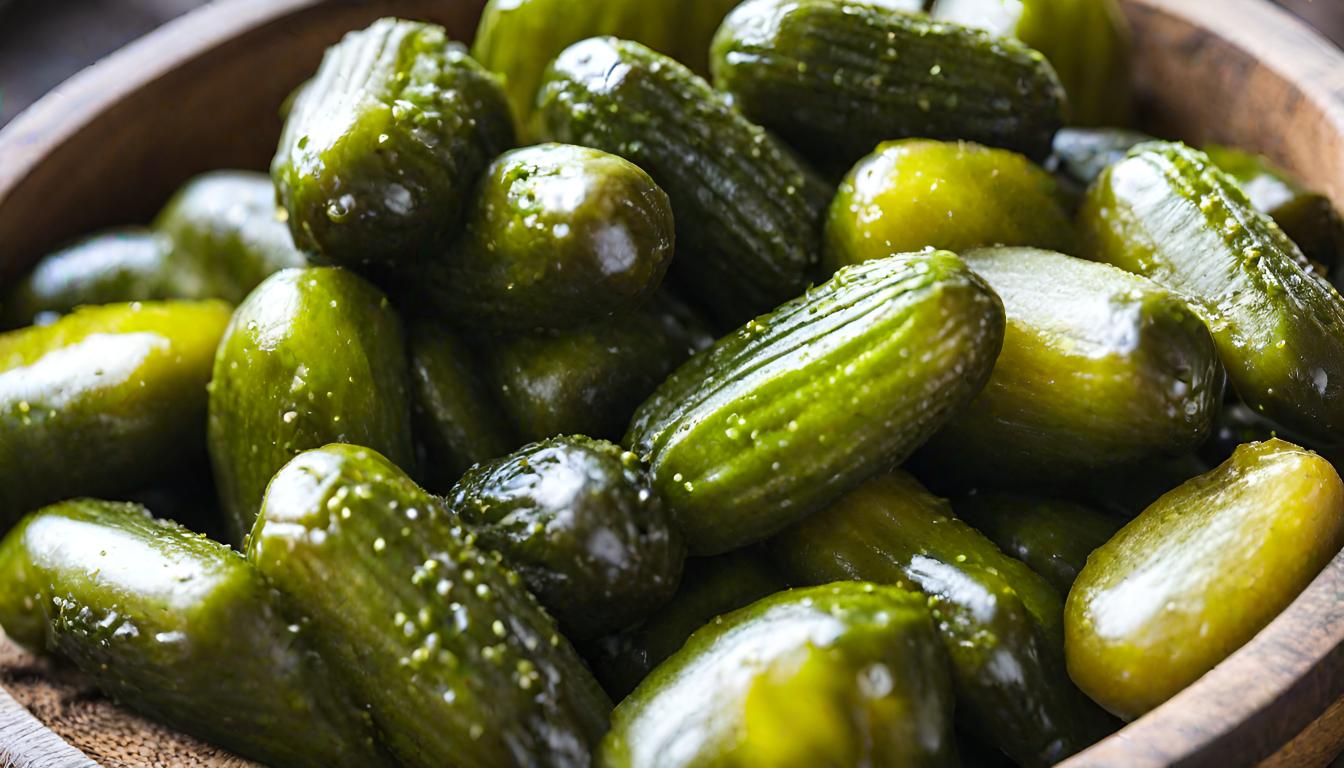
Key Ingredients Behind the Sweetness
At the forefront of the sweetening brigade is, of course, sugar. This quintessential ingredient can come in many forms – from granulated white sugar to brown sugar, and even honey or maple syrup for those venturing into more natural alternatives. Each type of sugar brings its own unique flavor profile to the pickles, making the process of choosing one an exciting culinary experiment.
However, in today’s health-conscious world, sugar alternatives are gaining traction. Ingredients like stevia or agave nectar are becoming popular choices for those looking to enjoy sweet pickles without the guilt. These alternatives can vary in sweetness intensity, so adjusting the quantities to achieve the perfect balance is key.
The Role of Vinegar
Now, let’s not forget about vinegar – the yin to sugar’s yang in the pickling world. Vinegar not only acts as a preservative but also adds a tangy counterpoint to the sweetness, creating a harmonious blend of flavors. The type of vinegar used can greatly influence the final taste of the sweet pickles. Apple cider vinegar, with its fruity undertones, is a favorite among many, while white vinegar offers a more straightforward tartness.
The interplay between sugar (or its alternatives) and vinegar is what gives sweet pickles their irresistible appeal. It’s a delicate dance of flavors that requires precision but allows for creativity. Finding the perfect ratio of sweetness to tanginess is part of the fun in making sweet pickles at home.
In the next section, we’ll explore the pickling process itself, from selecting the right cucumbers to the final step of sealing them in jars. This journey from cucumber to jar is where the magic happens, turning simple ingredients into a condiment that’s loved worldwide. So, stay tuned as we delve deeper into the craft of making sweet pickles, ensuring every bite is a perfect blend of sweet, tangy, and crunchy goodness.
The Pickling Process
Crafting Sweet Pickles: From Cucumber to Jar
The transformation of cucumbers into sweet pickles is nothing short of culinary alchemy. This section will guide you through the enchanting journey from selecting the perfect cucumber to the final act of sealing the flavorful concoction in jars, ready to be enjoyed.
Selection of Cucumbers
The first step in our pickling odyssey begins with the cucumber. Not all cucumbers are created equal when it comes to pickling. For sweet pickles, you want cucumbers that are firm, fresh, and free of blemishes. Smaller varieties, like Kirby or Persian cucumbers, are often favored for their crisp texture and smaller seeds. The size and shape of the cucumber can also influence the final product, whether you’re aiming for slices, spears, or whole pickles.
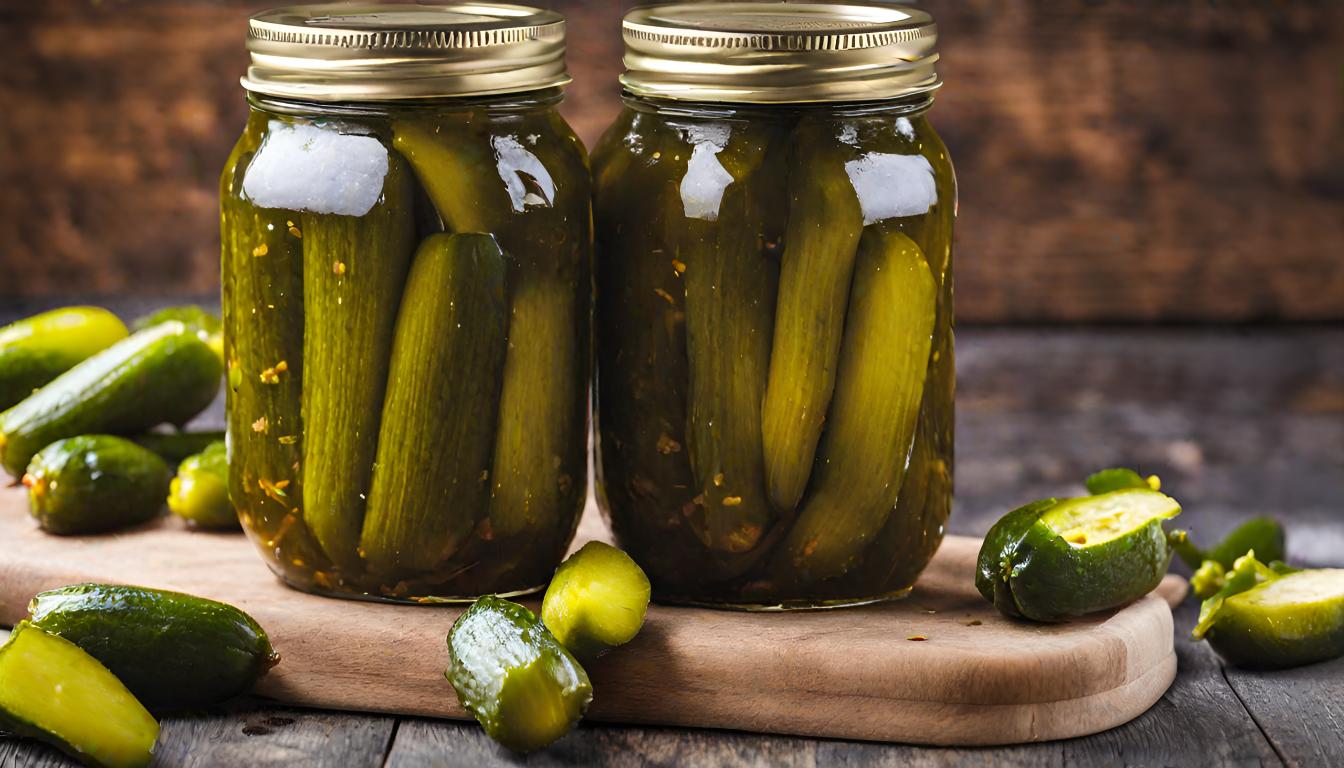
Preparing for Pickling
Once you’ve selected your cucumbers, it’s time to prepare them for their transformation. This involves thoroughly washing them to remove any dirt or pesticides. Cutting the cucumbers is the next step, and here, creativity can shine. Whether you prefer thin slices, chunky spears, or leaving them whole, each cut offers a different pickling experience. Just remember, the thicker the cut, the longer it may take for the flavors to fully penetrate the cucumber.
The Brining Solution
The brine is where the magic truly happens, turning ordinary cucumbers into delectable sweet pickles. A basic sweet pickle brine typically includes water, vinegar, sugar (or a sugar alternative), and a blend of pickling spices like dill, mustard seeds, and coriander. The exact recipe can vary, allowing for endless customization. Some might add garlic for a punch of flavor, while others might include a pinch of turmeric for color.
Adjusting the sweetness level is crucial. Depending on your preference, you can increase or decrease the amount of sugar. Remember, the brine’s flavor will intensify over time, so it’s often better to err on the side of caution.
The canning process might seem daunting at first, but with a bit of practice, it becomes a rewarding part of making sweet pickles. Not only does it ensure your pickles are safe to eat, but it also seals in the flavors, allowing them to develop over time.
For those new to canning, resources like the National Center for Home Food Preservation offer invaluable guidance on canning safety tips, ensuring your pickling adventure is both successful and safe.
Variations and Uses
Exploring the World of Sweet Pickles
Sweet pickles come in a delightful array of varieties, each with its unique taste and texture. This diversity not only showcases the versatility of pickling but also caters to different palates and culinary uses.
.
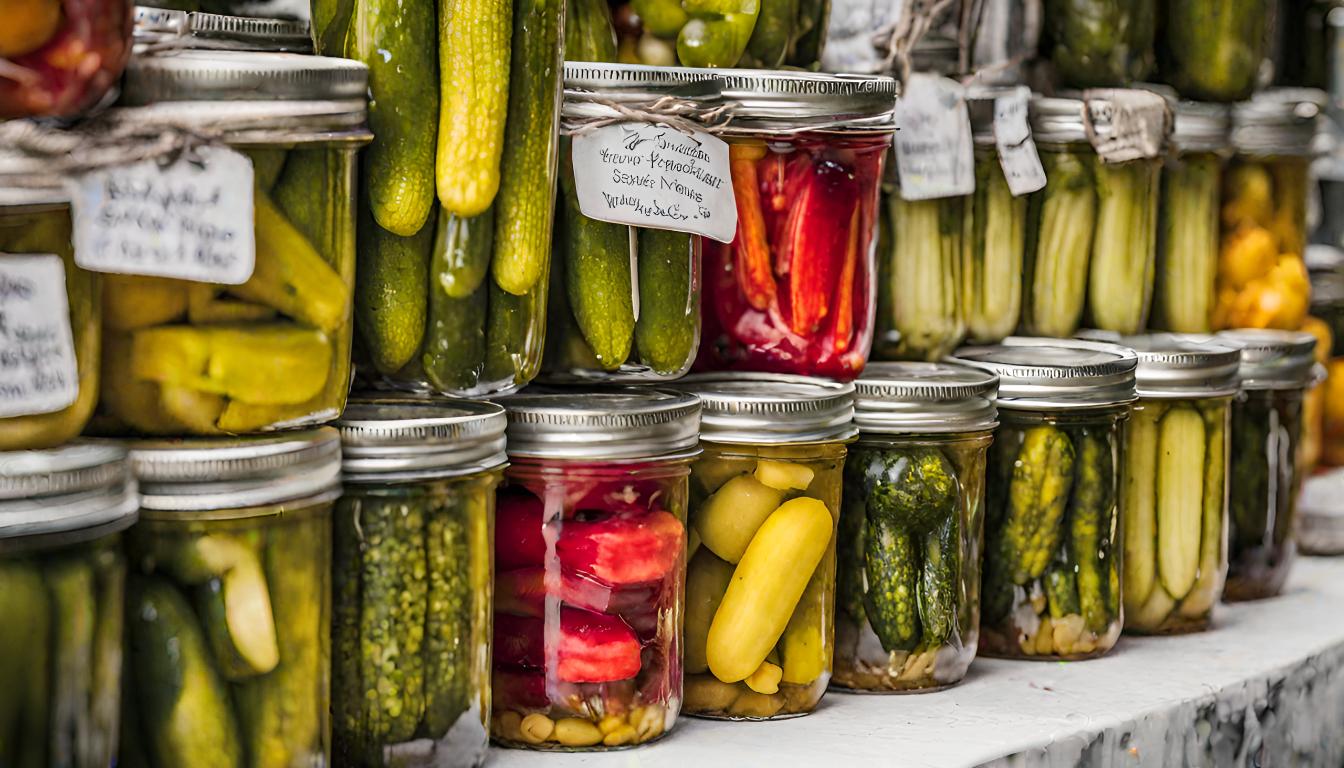
- Bread and Butter Pickles are popular sweet pickles known for their thin slices and a mix of sweet and tangy flavors. They enhance sandwiches and burgers or serve as tasty snacks. Their unique flavor comes from a balance of sweetness with onion and mustard seeds.Sweet Gherkins, tiny cucumbers pickled whole, offer a crunchy texture and intense sweetness. They’re great for snacking, charcuterie boards, tartar sauce, or deviled eggs, adding sweetness and texture.Sweet Relish, made from chopped pickled cucumbers, brings zesty sweetness to hot dogs, tuna, and potato salads. It combines cucumbers with onions and spices in a sweet vinegar brine, boosting simple dishes with its flavors.Sweet pickles can improve various recipes beyond being a side dish. They add unique flavors to your cooking, from sandwiches to salads.
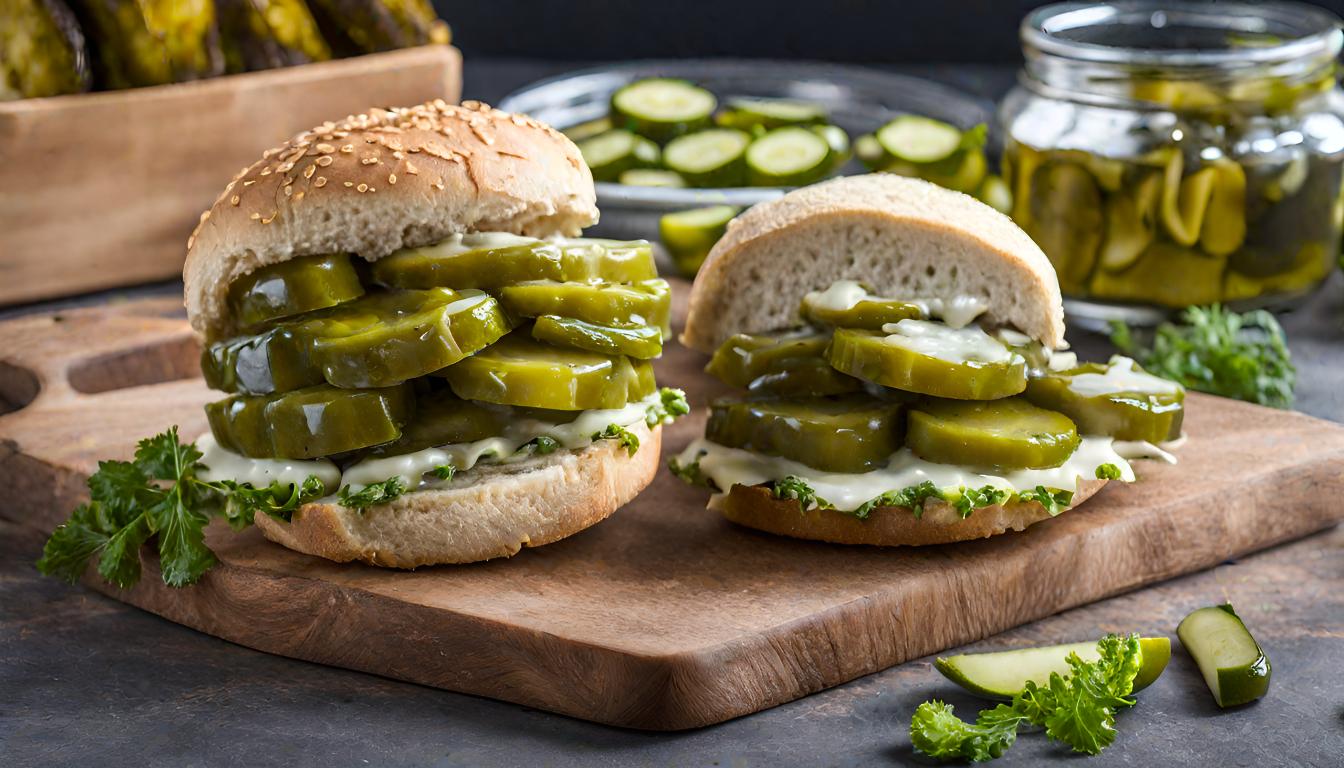
- sealed and processed in a water bath canner. This step is vital for preserving the sweet pickles and extending their shelf life.The canning process might seem daunting at first, but with a bit of practice, it becomes a rewarding part of making sweet pickles. Not only does it ensure your pickles are safe to eat, but it also seals in the flavors, allowing them to develop over time.For those new to canning, resources like the National Center for Home Food Preservation offer invaluable guidance on canning safety tips, ensuring your pickling adventure is both successful and safe.
Variations and Uses
Exploring the World of Sweet Pickles
Sweet pickles come in a delightful array of varieties, each with its unique taste and texture. This diversity not only showcases the versatility of pickling but also caters to different palates and culinary uses.
Bread and Butter Pickles
These are among the most popular types of sweet pickles. Characterized by their thin slices and sweet-tangy flavor profile, bread and butter pickles are perfect for sandwiches, burgers, or as a standalone snack. The sweetness is typically balanced with a hint of onion and mustard seeds, giving them a distinct taste that’s both refreshing and satisfying.
Sweet Gherkins
Gherkins are tiny cucumbers, often pickled whole with a sweet brine. They are crunchy, with a concentrated sweet flavor that makes them a favorite for snacking or as part of a charcuterie board. Sweet gherkins can also be chopped and used in tartar sauce or deviled eggs, adding a burst of sweetness and texture.
Sweet Relish
Made from chopped pickled cucumbers, sweet relish is a condiment that adds a zesty sweetness to hot dogs, tuna salads, and potato salads. The cucumbers are usually mixed with onions and spices, then pickled in a sweet vinegar brine. Sweet relish is a versatile ingredient that can elevate simple dishes with its complex flavors.
Culinary Uses of Sweet Pickles
Sweet pickles are not just a side dish; they’re a versatile ingredient that can enhance a variety of recipes. Here are some creative ways to incorporate them into your cooking:
- In Sandwiches and Burgers: The sweetness and crunch of sweet pickles cut through the richness of meats and cheeses, adding a refreshing element to sandwiches and burgers. They can be layered in as slices or chopped into a relish for a more distributed flavor.
- As a Side Dish: A simple dish of sweet pickles can be a refreshing side to heavy meals, balancing out flavors and adding a crunchy texture. They pair well with grilled meats, fish, and even vegetarian dishes, offering a sweet and tangy contrast.
- In Salads: Chopped sweet pickles can add depth and sweetness to salads. Whether it’s a potato salad, a macaroni salad, or a green salad, the pickles introduce an unexpected flavor and texture that can make the dish more interesting and satisfying.
Sweet pickles are a testament to the art of pickling, transforming simple cucumbers into a culinary delight that transcends cultures and cuisines. Whether you prefer them straight from the jar, in your favorite dishes, or as a creative addition to new recipes, sweet pickles offer a world of flavors waiting to be explored.
In the next section, we’ll delve into the nutritional profile of sweet pickles, shedding light on their health benefits and considerations. So, stay tuned as we continue to unravel the many layers of these tangy-sweet treasures.
Nutritional Profile
Health Aspects of Sweet Pickles
While sweet pickles delight the palate with their tangy sweetness, it’s also worth considering their nutritional profile and how they fit into a balanced diet. Like any food, sweet pickles come with their own set of health benefits and considerations.
Sweet pickles are low in calories and fat, making them a guilt-free snack for those monitoring their calorie intake. They also provide small amounts of vitamins and minerals, such as vitamin K, vitamin A, and potassium, which are essential for maintaining good health. The fermentation process can also contribute to a healthy gut microbiome by introducing beneficial bacteria.
However, it’s important to be mindful of the sugar and sodium content in sweet pickles. The added sugar contributes to their calorie count and can impact blood sugar levels, making it advisable for individuals with diabetes or those watching their sugar intake to consume them in moderation. Similarly, the high sodium content, a result of the pickling process, can be a concern for people with hypertension or those trying to limit their salt intake.
Considerations for Sugar Content
For those concerned about sugar, exploring sugar-free or reduced-sugar sweet pickle recipes can be a worthwhile endeavor. These alternatives often use sugar substitutes or natural sweeteners like stevia, which can lower the overall sugar content without compromising the pickles’ sweet taste.
Incorporating Sweet Pickles into a Balanced Diet
Sweet pickles can be a delightful addition to a balanced diet. Their unique flavor can enhance various dishes, making them a versatile ingredient in the kitchen. Below, we explore how to include sweet pickles in your meals healthily.
Health Benefits of Sweet Pickles
Sweet pickles offer more than just taste; they come with nutritional benefits. They are low in calories and contain vitamins and minerals essential for health. However, it’s important to consume them in moderation due to their sugar and sodium content.
Creative Ways to Enjoy Sweet Pickles
Sweet pickles can elevate the taste of many dishes. Here are some ideas:
- In Sandwiches and Burgers: Their crunch and tanginess add depth to these classics.
- As a Salad Ingredient: Chop them up for an extra zing in your salads.
- In Homemade Sauces: Sweet pickle relish can be a game-changer in sauces and dips.
Balancing Sweet Pickles in Your Diet
While sweet pickles are tasty, balancing their intake is key due to their sugar and sodium levels. Opting for versions with lower sugar and sodium can be a healthier choice. Also, pairing them with foods high in fiber and protein can help balance your meal.
By integrating sweet pickles into your diet thoughtfully, you can enjoy their unique taste while maintaining a healthy eating pattern.
- As a Flavorful Addition: Incorporating into meals as a condiment or a flavorful addition can enhance the taste without adding significant calories or sugar, as long as portions are controlled.
In Homemade Recipes: Making pickles at home allows for control over the amount of sugar and salt used, enabling adjustments according to dietary needs or preferences.
Balancing with Other Foods: When enjoying , pairing them with foods high in fiber and protein can help balance the meal and mitigate the impact of sugar and sodium.offer a unique blend of flavors that can enrich a variety of dishes. By being mindful of their sugar and sodium content, they can be enjoyed as part of a diverse and balanced diet, contributing both taste and pleasure to healthy eating.In the following section, we’ll address some frequently asked questions about sweet pickles, providing insights and tips to enhance your pickling experience. Stay tuned as we continue to explore the delightful world of sweet pickles.
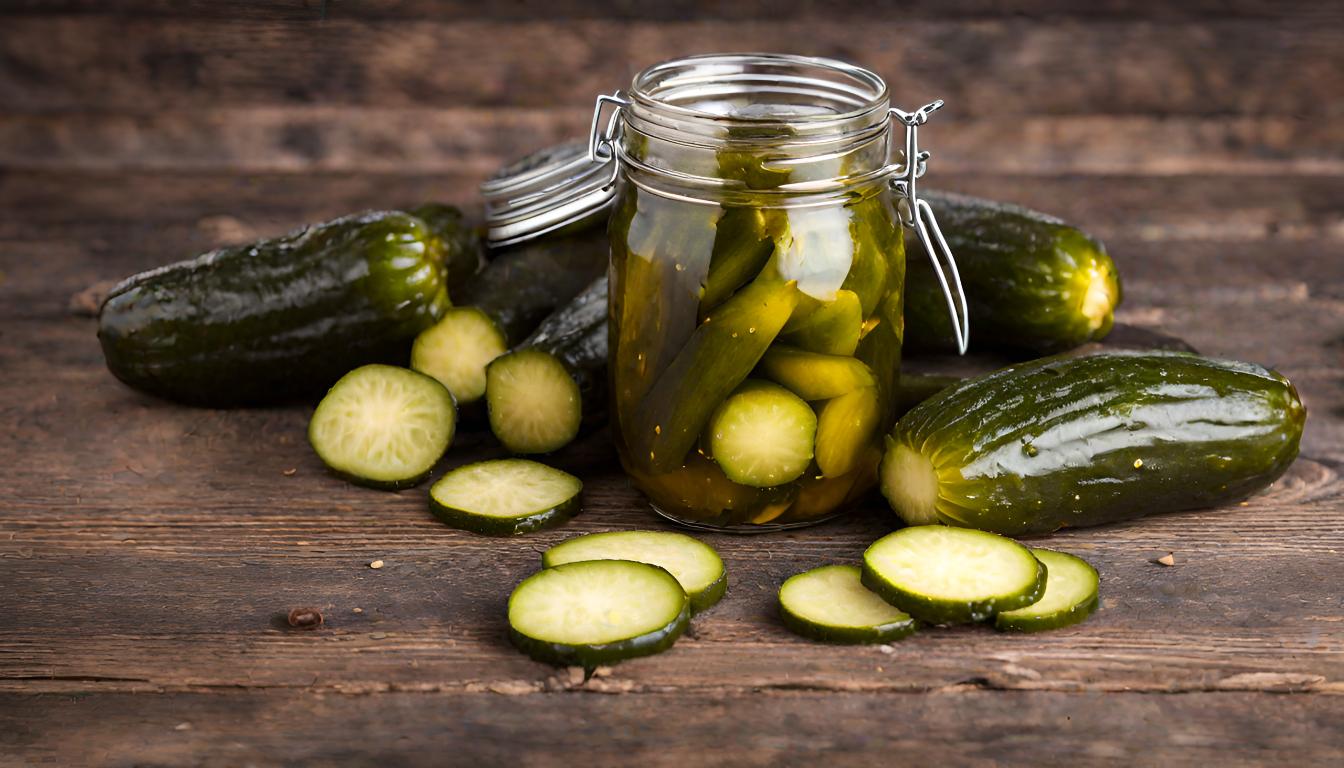
FAQs: Unveiling the Secrets
with their unique blend of sweetness and tanginess, often spark curiosity and questions among enthusiasts and newcomers alike. Here, we address some of the most commonly asked questions, providing insights that may enhance your appreciation and knowledge of sweet pickles.
How Long Do Homemade Pickles Last?
Homemade sweet pickles can last for several months when properly canned and stored in a cool, dark place. Once opened, they should be kept refrigerated and are best consumed within a month for optimal flavor and texture. The key to longevity is ensuring a proper seal during the canning process and using sterilized jars to prevent contamination.
Can I Make Without Sugar?
Yes, it’s possible to make without traditional sugar. Alternative sweeteners like stevia, erythritol, or even natural sweeteners like honey or maple syrup can be used to achieve the desired sweetness without using refined sugar. However, the flavor profile may vary slightly, so it’s worth experimenting to find the combination that best suits your palate.
Are Sweet Pickles Healthy?
can be a healthy addition to your diet when consumed in moderation. They are low in calories and provide small amounts of vitamins and minerals. However, due to their sugar and sodium content, it’s advisable to consume them mindfully, especially if you have dietary restrictions or health concerns related to sugar or sodium intake. Opting for reduced-sugar or low-sodium versions can make sweet pickles a healthier choice.
These FAQs highlight the versatility and considerations involved in enjoying sweet pickles. Whether you’re a seasoned pickle maker or a curious newcomer, understanding these aspects can help you make the most of your sweet pickle experience.
Conclusion: Celebrating the World of Sweet Pickles
In the final section of our exploration, we’ll wrap up with a conclusion that encapsulates the essence of sweet pickles and their place in the culinary world. Stay tuned for our sweet conclusion, where we’ll celebrate the joy these pickled delights bring to tables around the globe.

Conclusion
In essence, sweet pickles blend the art of traditional pickling with the joy of culinary exploration, offering a tangy-sweet flavor that enhances a myriad of dishes. Despite the need for moderation due to sugar and sodium content, they remain a cherished part of global cuisines, adaptable and beloved. Whether you’re crafting them at home or enjoying them from a jar, sweet pickles symbolize a simple pleasure, enriching meals and moments with their distinctive taste.
